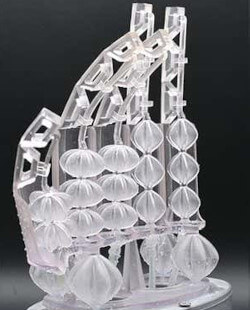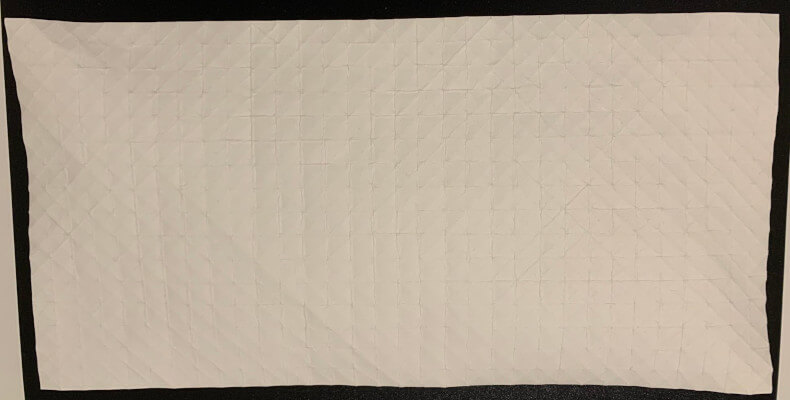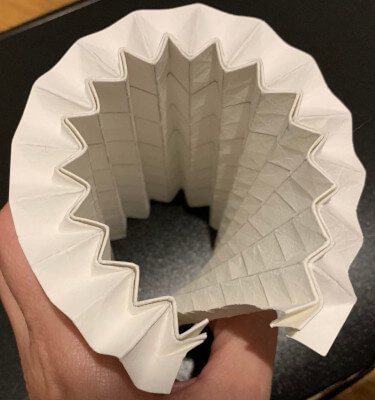12. Soft robotics¶
A soft robot is composed mainly of soft and flexible materials.It can bend, strech and flex. The properties of softness are from the form, from the material or a combination of the two. Soft robots can be actuated through various external stimuli, such as thermal, magnetic, or hybrid systems.
| Material | Form | Soft actuator |
|---|---|---|
| Fabrics, papers, flexible plastiques, rubbers (silicone, ...), electroactive polymers, hape changing alloys, gelatine, silly putty, liquid metals, hydrogels | Origami, kirigami | Pressure, electrical, magnetic, thermal, chemical, biological, photo-responsive, hybrid system |
The advantages of soft robots are the low manufacturing cost and the high number of degrees of freedom of these robots. These many degrees of freedom make it difficult to control these robots.
"Controlling soft robots is a much bigger challenge than with rigid robots", said Olivier Goury, researcher in soft robotics at the DEFROST laboratory.
Several examples of soft sobots:
| First - Chemical actuation / 2nd -Electrical actuation | First - Pneumatic pressure actuation / 2nd - Fluidic actuation | Tiny robot (magnetic actuation) |
|---|---|---|
- Artificial pneumatic muscles that can be extend and contract were build by the Genes technologic institut. They are controlled by electro-valves through an Arduino Mega board.

3D-Printed biomimetic artificial muscles and artificial hand (1)
Research¶
Muscles motion¶
Nylon artificial muscle¶
Nylon artificial muscle moves according to the heat selectively applied to the wire.
| Contraction | Bending |
|---|---|
| Nylon filaments can be used as artificial linear muscles when it twisted into a coil. | To allow the artificial nylon muscle to bend. Researchers at MIT have modified the shape of the nylon thread by roller pressing it , and then selectively heating it on one side they can force the fiber to bend. |
Self folding origami structure¶
The muscle motion is based of the structural geometry of the skeleton.
References & Inspiration¶
In the Fluid-driven origami-inspired artificial muscles article, the process is well defined. Figure below.

The artificial muscle is composed of an origami piece called "skeleton" slipped inside a vaccum chamber called "skin". The shaping of the skeleton can be done in different ways: forming, machining, 3d printing, folding and casting.
Montse Serrat's Fabricademy Project, Bodymimicry, 2019
Process and workflow¶
For my first tests, I cut plastic bags to fit the size of each skeleton and sealed each vacuum chamber permanently. I later chose to use a large plastic bag and keep its zip to be able to quickly test the different shapes.
I chose the paper (180g/m²) and plastic (plastic sleeve) folding as a method to obtain the skeleton.
To make the vacuum, the hose connected to the vacuum chamber is connected at the other end to a vacuum. The contraction and relaxation of a model is done through the introduction and exit of the vacuum hose.
Accordion origami¶
| Paper accordion | Perforated paper accordion | Plastic accordion |
|---|---|---|
Magic ball origami¶
I wanted to reproduce the origami-inspired artificial muscles with the magic ball form in this article (see the videos in supporting Information).
An origami magic ball is a sphere shape created by folding a piece of paper. It is called a magic ball because when manipulated, the sphere changes shape. It is a repetition of interconnected waterbomb bases.


Waterbomb base
To try to make a magic ball, I followed this tutorial bellow.
Note: I have marked the diagonals for easier assembly than this method.
Pecreasing the paper horizontally, vertically and diagonnaly to have tiny squares and its diagonals.

Punch gently the paper depending on whether the fold is a mountain or a valley according to the crease pattern.

Note: You have to be very patient and not be afraid to start from the beginning again because the paper is too damaged.
| Paper folded to obtain 512 small squares and its two diagonals | Folds to obtain the magic ball structure | Folds to obtain the magic ball structure |
|---|---|---|
 |
 |
 |
The magic ball origami is long process to learn. At this moment, I have obtained a line of magic ball modules. We can already see the elasticity of this line of modules. I put my unfinished magic ball in the vaccum chamber to see its behaviour.
Remark: I did not cut the paper below the modules line because the paper still has to be folded. However, it is noted that the uncut paper must generate the contraction of the modules located below those contracted.
| Behaviour of folded paper according to magic ball module | Contraction of magic ball modules |
|---|---|
To go further¶
- 3D printing for soft robotics – a review
- IEEE RAS Technical Committee on Soft Robotics
- Soft Robotics Toolkit: a collection of shared resources to support the design, fabrication, modeling, characterization, and control of soft robotic devices
- Recent Progress in Artificial Muscles for Interactive Soft Robotics
- Soft Actuators for Soft Robotic Applications: A Review
-
Corrado De Pascali, Giovanna Adele Naselli, Stefano Palagi, Rob B. N. Scharff, Barbara Mazzolai (2022) 3D-printed biomimetic artificial muscles using soft actuators that contract and elongate. Science Robotics ↩